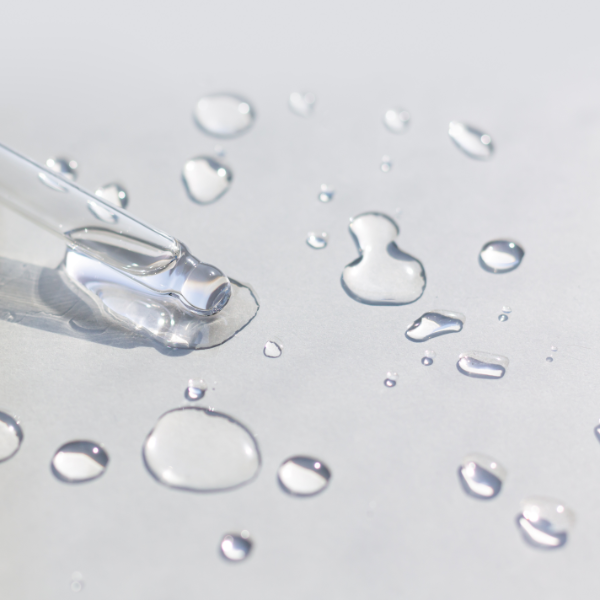The Importance of the Skin Barrier
by Deborah Duffey, Chief Product Development Officer and President January 28, 2021

From the outside, skin looks like one cohesive organ. Its function is an afterthought, with our main goal to just make it look good. But our skin is as important as any other body part and has a critical role just like any other. All of the layers of skin play a part, but when it comes to skin and skincare, today we’re most concerned with the skin barrier.
We’ll explain the importance of the skin barrier—along with everything else you need to know about keeping it healthy—but first it’s important to understand why any of this matters in the first place. Most of the time, skin functions perfectly fine without our intervention. When we use products to support skin’s health and to improve how it appears, we also run the risk of disrupting its delicate balance. Furthermore, the skin barrier can actually impede the effectiveness of the products you use, which makes it vital to choose products that work with the skin barrier—not against it.
Knowing how the skin barrier works and how to keep it strong is key to healthier, better-looking skin, so with that in mind, let’s first get into the basics of what the skin barrier is.
What is the skin barrier?
The skin barrier is the outermost layer of your skin. As the name implies, it acts as a literal barrier between your body and the rest of the world—a fortress that protects you from viruses, bacteria, dirt, allergens, and pollutants, among other things. It also keeps water in the body and supports your natural oils, meaning it keeps the skin hydrated.
The skin is broken into many layers within the epidermis, but the top layer where the skin barrier is located is called the stratum corneum. This area is also sometimes referred to as the acid mantle because it maintains a slightly acidic environment in order to ward off those viruses and bacteria and to prevent the growth of fungi. You can actually feel this barrier when you touch your face—it’s that slightly oily film—and after a harsh cleanser disrupts it, you might notice a tight, dry feeling.
Keeping the skin barrier healthy is vital. Not only is a damaged skin barrier detrimental to our health, but it also causes skin to actually look unhealthy, too.
How the skin barrier becomes damaged
The skin barrier can be damaged both through our actions and from environmental factors (fortunately, both of these can be mitigated). When it comes to ways we might damage the skin barrier, the most common is through over-exfoliation. This can be due to using strong acid exfoliants too often, scrubbing too hard with physical exfoliators (like scrubs or rough washcloths), or even skincare products with strong actives, like retinoids, without proper precautions. Harsh soaps can also cause damage by stripping the skin of its acid mantle.
The environment can also damage the skin barrier. UV radiation from the sun not only causes long-term damage, but it also temporarily hurts the skin barrier. Wearing sunscreen and other safeguards can prevent this. Wind can cause similar damage. Windburn usually affects the lips, but it can damage any part of the skin if it’s exposed too long to cold, powerful gusts. This can be mitigated by covering skin or by applying balms and salves prior to exposure.
Signs your skin barrier is damaged
The skin barrier will let you know it’s damaged; however, the signs can be easily mistaken for other issues. But if you’ve been over-exfoliating or spending a lot of time in harsh weather, it’s probable that your skin barrier is the reason for your symptoms.
Some signs of a damaged skin barrier are redness, irritation, itchiness, and sensitivity. You may develop a rash, or notice that your skin is suddenly much drier and flakier (a consequence of it no longer being able to hold in your natural oils and moisture). If you find that products you’ve used with success in the past are now stinging or causing redness when applied, this is a good sign, too. Even acne can pop up as a result of a compromised skin barrier.
A damaged skin barrier needs to be repaired quickly, but thankfully it only takes some careful changes to your skincare routine to begin healing.

How to repair your skin barrier
If your skin is already damaged, you’ll need to take some time to repair it before jumping back into your usual skincare routine. This will involve paring back the products you use and treating your skin gently.
First, make sure you’re supporting your body as a whole. This means eating a healthy diet, getting adequate sleep, and avoiding smoking and alcohol. These will go a long way towards helping your skin repair itself and act as a base for continued health.
Next, use gentle, nourishing skincare. When cleansing, try oil or cream cleansers, and use warm water instead of hot. Avoid physical and acid exfoliation, whether it comes in the form of a rough washcloth, a glycolic acid toner, or a peel. Instead, use serums with antioxidants, hyaluronic acid, or similar healing ingredients. Moisturizers can combat the dryness and irritation of a damaged skin barrier, so use them liberally. Don’t use retinoids, either, until your skin is healed.
And finally, make sure environmental factors aren’t making your skin barrier worse. Apply sunscreen anytime you’ll be outside, and if it’s especially cold or windy, creams and balms can provide protection against windburn.
Be careful when applying makeup, too. Hold off on heavy, full-face foundations when possible, and look for makeup products that are designed for sensitive skin.
You may be tempted to start using your favorite exfoliators or retinoids as soon as you notice your skin is healed, but go slow. Give your skin adequate time to renew itself, and when it’s ready, be sure to add products slowly and build a skincare routine that supports the skin barrier rather than compromising it. This is also a good time to start noticing how your skin reacts to each product. If you find that a toner stings, or that your cleanser makes your skin feel tight, it might be time to switch them out for something less irritating.
What products support the skin barrier?
In contrast to strong, active ingredients, the products that most support the skin barrier are those that are nourishing and healing. Think antioxidant serums, creamy moisturizers, and hydrating masks. Even more intense products, like toners, exfoliators, and peels, can be formulated to help skin rather than strip it.
Remember that just because you don’t notice any side effects, like peeling skin, stinging, or redness, doesn’t mean a product isn’t powerful. In fact, in many cases, this lack of “proof” is a good thing—powerful ingredients that don’t destroy the skin barrier give skin all the benefits without compromising your skin’s health.
Another important note: the skin barrier protects us from tiny unwanted invaders like viruses and bacteria, and it doesn’t discern between those organisms and the ingredients in your skincare products. Although you’ll see better results if the anti-aging ingredients reach deeper into your skin (where they can make a long-term difference by affecting new cells), most products only reach as far as the top of your skin. This is where nanotechnology comes in. Nanotechnology enables skincare ingredients to be packaged in extremely small spheres that are tiny enough to penetrate through the skin’s layers. Look for skincare that uses nanotech to allow products to work with the skin barrier—these products keep skin healthy and strong while still delivering powerful ingredients into your skin. Read our blog on nanotechnology and skincare to learn more.
How to build a skin-barrier-supporting routine
You can use acid exfoliants and powerful skincare ingredients while supporting a healthy skin barrier, you just have to build the correct skin-barrier-supporting routine.
First, remember to wear sunscreen and mitigate your UV exposure. This will go a long way in protecting your skin’s barrier now and in the long term. And when using products that might dry skin, be sure to follow up with ingredients that support hydration. Don’t use peels or exfoliation products longer or more often than recommended because you think this will allow them to work better or faster—the damage it will cause your skin barrier will set back any progress you’ve made.
Be gentle with your skin and avoid using hot water and rough washcloths. Pat skin dry instead of rubbing. And pay attention to how your skin reacts to the products you use. Do you need to cut back on drying products? Is your face feeling tight after cleansing? Adjust your routine each day if needed. And if you notice that your skin is beginning to show signs of skin barrier damage, remedy it as soon as possible.
If you’re ready to make skin-barrier-healing changes now, consider adding Secret Code DNArescue™ to your routine. This gentle spray mist is actually a deep moisturizing lotion that feels soothing. And its hydrating ingredients support a healthy skin barrier. Despite its calming properties, it also contains strong anti-agers that help to prevent cell damage.




